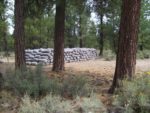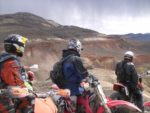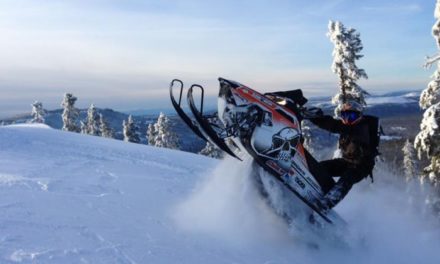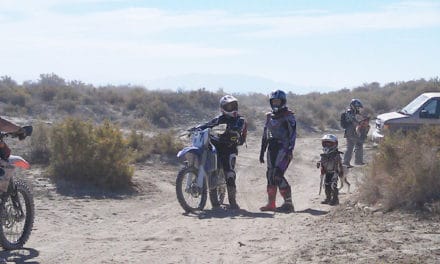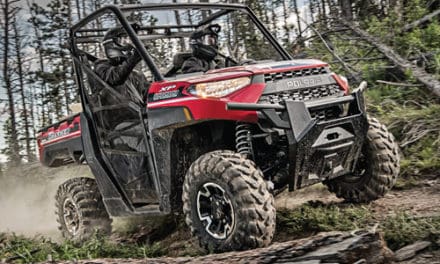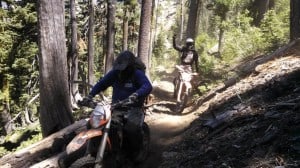
Preparing for the Next Ride
If you have not checked out the dual sport adventures of Nor Cal Stew, there are plenty to begin with from our past editions, which you can find online at mountainvalleyliving.com. Scroll to the bottom of the page and find the category named ‘Riding & Racing’. Rider John Stewart shares his adventures in each edition. In response to a reader’s request, we asked John how he prepares for each ride. What to bring, where to start and what to think of ahead of time.
MAPPING THE RIDE
Stewart said he begins looking at an area he wants to explore. “Then it all starts with a paper map,” he said. John prefers using Benchmark maps to study the challenging routes. He highly recommends Benchmark maps saying, “I haven’t found a better map book. It is high in quality and it’s not even an expensive map.” After studying the Benchmark map to determine the best route to his destination, he begins charting his route with the paper map. He then turns to Google Earth’s mapping system. This gives him the opportunity to print the entire route and the corresponding directions. He chooses not to use the Forest Service’s maps stating that the Benchmarks are less expensive, and every bit as comprehensive. He chuckled adding, “plus, I don’t like to give the government any more money than I have to.” John enjoys the challenge of the ride and the mapping. Research is key. Knowing where your next meal is coming from is always a good thing. He packs plenty of snacks and a small tent because, he said, “you never know when you might have to sleep somewhere you didn’t expect to. “
What I Take Along on a Dual Sport
John told us he has two goals in packing for a ride. One is to have everything he could possibly need. The second one is to pack light. With all that in mind, John takes along a backpack, a cell phone, warm, dry clothes and rain gear that packs tightly.
It would be unwise to take any back-road trip without basic tools like matches, the best survival backpack you can find, water and food. John packs light, high energy snacks like jerkey, nuts and granola bars, knowing that his plans include dining out along the way. He also knows that on this type of trip, things can change.
“As far as packing goes. I always go with lightweight backpacking gear. It’s a balance between budget and function. You could get by with a few items at WalMart, but I wouldn’t buy a sleeping bag there.” He advises getting the best one you can afford. “But in my experience”, he adds, “you can get taken if you don’t do some research on gear reviews. You could spend $500 on a sleeping bag… but you don’t have to, in my opinion. Tents are the same way. I look for ease of set up and how small it will pack. I stay away from any that require stakes to pound. If your camping on granite, or in the desert on bottomless sand, a 6″ tent stake is useless. Free standing tents only.
I always bring emergency water purifying tablets, they are cheap, take up no room and might save your life. I also route my trips to include water sources and of course fuel as my bike will go about 150 miles between fueling. Im also a map hound. I use a gps mostly on the ride, but during the route planning I study maps. There has been times when I was in an unfamiliar forest in another state and I could see the topography of the land and know the ridges/mountains/valley because I’d looked at them on the map so many times. It’s almost like I’ve been there before. So the moral… study your maps, and bring tools.
You must work on bikes at home to know what to bring in the field. I have whittled my tool pack down over the years. I keep a light pack with the most pertinent tools in it. It’s hard to enjoy a killer Downiville single-track with the kitchen sink on your back. If you can’t change a tire or can’t perform other simple and necessary maintenance tasks, bring someone who can, or learn how. I guarantee if it can go wrong, it will when you are the furthest from a town, in the middle of nowhere, with zero cell service. This moral… be prepared but not so prepared that you need a trailer to carry your stuff.
Last is attitude. Bring your can-do sense of adventure and your looking-for-a-good-time attitude. If you’re constantly worried about where you are or what might break, stay home or drive a car around. I’ve been on rides with people who couldn’t relax about the “what ifs”. What if… we have a killer ride and we get to see cool country and travel like few do?. Stay positive, be flexible and have fun. Stop worrying. I think it’s the search for adventure and the ‘what ifs’ that make this type of travel fun, not the destination each night.


